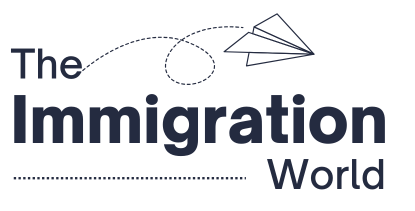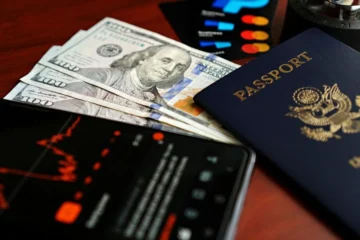Starting August 4, 2025, the Netherlands is going fully digital with its Schengen visa process. Say goodbye to handwritten forms and hello to online applications. But before you click your way to a Dutch adventure, here’s everything you need to know about who qualifies, how it works, and what to prepare.
Key Takeaways
What’s Changing in the Netherlands’ Visa System from August 2025?
If you’ve ever wrestled with a paper visa form, scanned it three times because of smudges, and then waited in line at a consulate—those days are numbered. Beginning August 4, 2025, the Netherlands will only accept Schengen visa applications through its digital platform, marking a major move away from pen-and-paper bureaucracy.
This shift affects short-stay Schengen visa applicants—typically tourists, business visitors, or individuals requiring a stay of up to 90 days within 180 days. The main driver behind this reform? Efficiency. The Dutch government wants to reduce application errors, speed up processing times, and integrate with future EU-wide visa systems, like the Schengen Entry/Exit System (EES), launching later this year. It’s not just about tech for tech’s sake—it’s about cleaning up a messy, outdated process.
Who Needs to Apply Through the New Digital System?
If you’re planning a visit to the Netherlands and need a short-stay Schengen visa, this new system applies to you. Whether you’re coming from India, Nigeria, Turkey, or any other non-Schengen country that requires a visa to enter the zone, you’ll now need to submit your documents online.
That said, not everyone needs to use this system. Citizens of visa-exempt countries—like the U.S., Canada, Japan, Australia, and others—can continue to enter the Netherlands without a Schengen visa for short visits. However, if you fall into the visa-required category and are accustomed to visiting a Netherlands Visa Application Centre (VAC) with paper documents, it’s time to adapt.
Also Read: Is Luxembourg the Easiest Country to Get a Work Visa in 2025?
This also applies regardless of the purpose—tourism, business, family visits, cultural exchanges, or attending events. If it’s a short stay and you need a visa, digital is now your only route in.
How Will the New E-Visa Application Process Work?
The Netherlands isn’t just uploading a PDF and calling it a day. The new process starts with creating an account on the Netherlands Ministry of Foreign Affairs website. Once logged in, you’ll complete the Schengen visa application form entirely online.
Next, you’ll need to upload your documents—we’re talking passport scans, travel insurance, proof of funds, accommodation details, and your travel itinerary. You’ll also upload a passport-sized photo and confirm all the required information. Once submitted, the system will generate a digitally completed visa form, which you’ll print, sign, and bring with you to your biometric appointment.

That last part is important: while the application is digital, you still need to show up in person to provide your biometric data—fingerprints and a photograph. This makes it a hybrid process for now, but the bulk of the paperwork has finally moved online.
Will You Still Need to Visit a Consulate or Embassy?
Short answer: yes, at least once.
Even with the new digital submission system, all applicants must attend a biometric appointment at a designated Visa Application Centre (VAC). If you haven’t given biometrics for a Schengen visa in the last 59 months (roughly five years), you’re required to go in person.
At this appointment, VAC staff will collect your fingerprints and take a live photo, and you’ll need to bring your printed and signed e-application form along with your original documents. So while the paperwork is going digital, the personal visit hasn’t been eliminated—yet.
Looking ahead, once the EU-wide visa platform and Schengen Entry/Exit System are fully operational, future visits might eventually become fully remote. But for now, expect a blended approach.
What Should You Do to Prepare for This Transition?
If you plan to apply for a Schengen visa to the Netherlands after August 4, 2025, don’t wait until the last minute to adapt. First, familiarize yourself with the official Netherlands visa portal and bookmark it to avoid being misled by scammy third-party services.
Next, digitize all your key documents—passport pages, photos, hotel bookings, travel insurance, bank statements, and so on. Make sure scans are clear, in the correct file format, and named properly (yes, “scan1finalfinal.pdf” is not going to cut it).
If you’re unsure about your photo size or document quality, check the portal’s specific upload guidelines. And before heading to your VAC appointment, double-check that you’ve printed and signed your form—forgetting that last step could delay your application.
Also Read: Which In-Demand Jobs in Canada Could Get You PR in 2025?
Most importantly, don’t wait until a week before your trip to apply. While the system is expected to reduce processing time, there could be initial teething problems. Applying early gives you a buffer in case anything needs resubmission.
Final Thoughts
The Netherlands is stepping confidently into the digital future with its e-visa rollout. For travelers, it’s a welcome step toward a smoother, faster, and less paper-heavy application process. But don’t let the word “digital” fool you—it still requires careful preparation, biometric appointments, and document precision.
Whether you’re a first-time visitor to Amsterdam or a regular in Rotterdam, these changes will affect how you get that all-important stamp in your passport. So log in, upload, and print smartly—and you’ll be sipping Dutch coffee along a canal in no time.
Reference: https://www.indianembassynetherlands.gov.in/page/e-visa/





